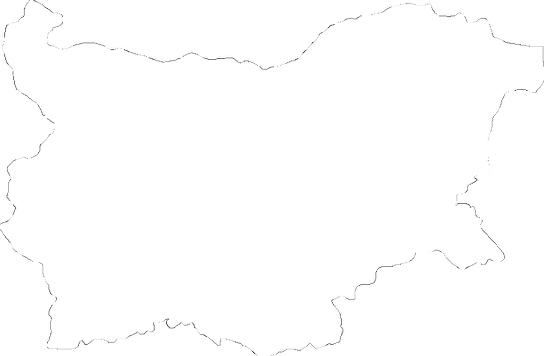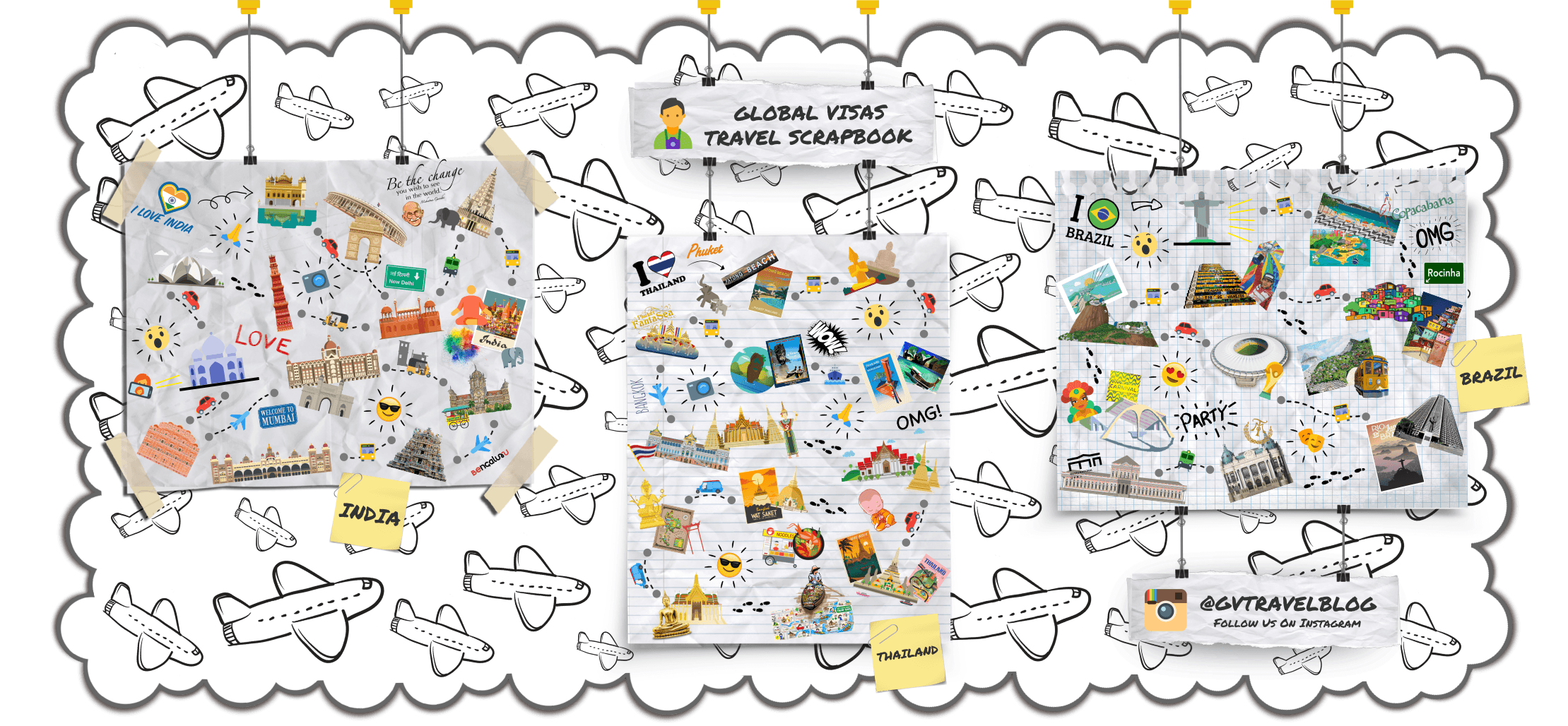EAT:
Bulgarian cuisine is a representative of the cuisine of Southeastern Europe. It has some Turkish and Greek influences, but it has some unique elements. The relatively warm climate and diverse geography produce excellent growth conditions for a variety of vegetables, bean cultures, herbs and fruits. Bulgarian cuisine is particularly diverse.
Famous for its rich salads required at every meal, Bulgarian cuisine is also noted for the diversity and quality of dairy products and the variety of wines and local alcoholic drinks. Bulgarian cuisine features also a diversity of traditional hot and cold soups, and numerous main dishes featuring a myriad of local grown vegetables. The meat appetizers that are typically served after the main dish are not to be missed out on. Bulgaria is also famous for the abundance of pastries in its cuisine.
A traditional Bulgarian meal starts with a salad of choice and some strong alcoholic beverage. The Bulgarian likes to drink wine or beer with its main dish continuing with the chosen drink by the end of the meal. This is why in most restaurants a salad is considered to be the best combination for strong alcoholic drinks.
In recent years, restaurants serving international cuisine have also made a presence in the country, offering various options such as Chinese, French, Italian, and international contemporary.
It is also worth noting that because of Bulgaria’s beneficial geographical location and the slow technological progress in the agricultural sector of the economy the plant products used in the typical Bulgarian kitchen are all organic.
Most common foods:
Most Bulgarian dishes are oven baked, steamed, or in the form of stew. Deep-frying is not very typical, but grilling – especially different kinds of meats – is very common. Turkish-influenced dishes do exist in Bulgarian cuisine with most common being moussaka, gyuvetch, and baklava. Pork meat is the most common meat in the Bulgarian cuisine. Fish and chicken are widely eaten, while beef is less common.
Yogurt (Kiselo mlyako) is very popular. It is mixed with water (drink called ayryan or airian) and it is added to main dishes (especially liver based or with minced meat). White cheese (brine) is a very popular ingredient in the Bulgarian cuisine too. Salads are often topped it it and it is often added to soups and main dishes.
- Banitsa (also diminutival called banichka) is a traditional Bulgarian food prepared by layering filo pastry with various ingredients. Cheese is the most popular one, but there are also spinach, potatoes, minced meat or kraut (in the winter season). Usually people eat it for breakfast but it goes at any time of the day.
- In the bakeries there are also various flour based cakes like kozunak (sweet bread, Easter cake with raisins), kifla (rolls with chocolate or marmelade) and some salty variations with white or yellow cheese.
- Tarator is a cold soup made of yogurt and cucumber (dill, garlic, walnuts and sunflower oil are sometimes added) and is popular in the summer season.
- Shkembe chorba (tripe soup) is widely believed to be a hangover remedy. There are a few 24/7 places in Sofia where young people go early in the morning after a party, to have a Shkembe.
- Shopska salad is a traditional Bulgarian cold salad popular throughout the Balkans and Central Europe. Its name comes from the people born of Sofian descent called “shopi”. It is made from tomatoes, cucumbers, onion/scallions, raw or roasted peppers, white brine cheese and parsley.
- Snezhanka salad or Snow White salad is made from yogurt and cucumbers. Snezhanka (Snow White) salad derives its name from the fairy tale character Snow White but the only reason for the name is the predominantly white color of the salad.
- Trushia is served predominantly in the winter season – pickled vegetables. It is a traditional appetizer (meze) to go with the alkoholi drink rakia. It is often served in restaurants or it can be bought prepared from supermarkets. There are different recipes made with garlic, chili peppers, celery, cauliflower, carrots, cabbage and other vegetables, and dried aromatic herbs pickled in vinegar, salt, and different spice mixtures, which usually include whole black peppercorns, ginger, etc.
- Kyopolou salad is a popular Bulgarian and Turkish relish made principally from roasted eggplants and garlic. Bell peppers, tomatoes, parsley are added.
- Green Salad, very popular in the spring season and Easter, is made of lettuce, radish, cucumber. Boiled eggs are added on Easter. Sometimes it is served topped with yogurt.
- Lyutenitsa (Ljutenica or Lutenica) is a vegetable relish. The ingredients include tomatoes, peppers, eggplant, onion, garlic or black pepper. It comes in many varieties. Lyutenitsa comes in a jar and is often used as a spread on toast and breads. It is also popularly eaten with many meats, meatballs and kebapcheta.
- Kebapche (plural Kebapcheta) is grilled minced meat with spices (black peopper or cumin). The meat is shaped into an elongated cylindrical form, similar to a hot dog. Typically, a mix of pork and beef is used. Kebapche is a grilled food. It is never fried or baked.
- Kyufte (also Kiufte, plural Kiufteta) is minced meat, with traditional spices, shaped as a flattened ball.
- Sarma is a dish of grape or cabbage leaves rolled around a filling usually based on minced meat.
- Musaka (Moussaka) is potato-based dish with pork mince, and the top layer is usually yogurt mixed with raw eggs.
- Yogurt is popular dessert served with jam, dried or fresh fruits or honey. In the Sofia area it is often called Vezuvii (Vesuvius) or given other “marketing” names in the restaurant menus.
- Baklava is very popular dessert but it is rarely served in the restaurants in Sofia. It can be found in boxes in the supermarkets.
- Garash cake is commonly found in patisseries and restaurants. It is made of ground walnut kernels, sugar and topped with chocolate icing.
Vegetarian:
There are a number of traditionally vegetarian dishes in Bulgarian cuisine including salads, soups, and some main dishes.
Salads – main ingredients in Bulgarian salads are tomatoes, cucumbers and white cheese. The most popular Bulgarian salad is Shopska salad, which is a mix of tomatoes, cucumbers, onion, raw or roasted peppers (preferably roasted), white cheese and is typically seasoned with parsley. The dressing for Shopska salad is salt, sunflower oil and wine vinegar.
Soups – Traditional Bulgarian vegetarian soups include: Bob Chorba (боб чорба) which is a minty bean soup, Leshta Chorba (Леща чорба) which is minty lentil soup and Tarator (Таратор) – a cold yoghurt and cucumber soup.
Main dishes – there is a wide variety of boiled, fried, breaded, or roasted vegetarian dishes.
- Panagyurski style eggs (Яйца по панагюрски) – Boiled open eggs served in yoghurt and white cheese with red pepper and garlic seasoning
- Mish-mash – fried mixed eggs with peppers (and onions) seasoned with fresh spices
- Byurek pepper (Чушка бюрек) – baked pepper stuffed with seasoned eggs and white cheese mix, breaded and fried
- Vegetarian sarmi (посни сърми) – rolls of either vine leafs or pickled cabbage leafs filled with seasoned rice and served with yoghurt
Traditional milk products:
There are only two native kinds of cheese: the yellow-colored Kashkaval (Кашкавал) – more or less akin to the Dutch Gouda – and the more popular white Sirene (Сирене) – a kind of Feta cheese, similar to Greek Feta in taste but more sour. Originally made from sheep milk, it is available from cow or goat milk, or mixed.
A pride of the Bulgarian people, yoghurt has Bulgaria for its motherland. The native Bulgarian original yoghurt (kiselo mlyako) contains Lactobacilicus Bulgaricus, a bacterium which serves as the basis for active culture “plain” yoghurt in other countries. Normally made from cow or sheep milk, it can also be prepared from buffalo milk, with a remarkably stronger taste.
Being a staple, and quite favourite around the country, Bulgarian yoghurt also is an ingredient to many dishes, the most famous one being the cold soup Tarator and the drink Ayran. Yoghurt is also a main ingredient of a white sauce used in baking.
There are a lot of dishes served with yoghurt on the side since Bulgaria is the homeland of the product.
Traditional meat appetizers:
There is a large number of traditional meat appetizers from all kinds of meat in Bulgarian cuisine. The most widely consumed, however, have been pork. Traditional meat appetizers are made from either the meat of the animal or from its intestines, but some of the delicacies include both. Other ingredients include leek, garlic, sometimes rice and a wide variety of herbs and spices such as savoury, thyme, parsley, cumin, dill, black pepper, red pepper, and others.
Cooked traditional meat appetizers include fried liver ( typically chicken, pork or lamb), roasted lamb intestines in herbs and spices, breaded veal tongue or veal tongue with mushrooms in butter, and veal stomach in butter or with mushrooms and cheese. Other popular cooked meat appetizers are sazdarma (саздърма) and bahur. Sazdarma is made of chopped meat and usually is seasoned with Daphne leafs and black pepper and can be from veal, lamb or mutton, while bahur is made of chopped pork meat and liver, with added rice and seasoned with allspice, savoury and black pepper. Although, some may think that those appetizers do not sound attractive at all, many of them fin out that they are a jewel once they have tried them.
Smoked and/or dried meat appetizers can be generally divided into two types: pastramis and salamis.
Some of the most popular pastrami-type appetizers are the pork Elena fillet (a salted air-dried fillet covered in savoury, thyme and other herbs) and Trakiya fillet (again, salted and air-dried fillet which is more juicy than Elena fillet and is covered in red pepper). There is also a wide variety of conventional pastramis (air-dried and then smoked and steamed) made from pork, veal, mutton, lamb and turkey. Pastrami in Bulgaria is transcribed as пастърма (pastarma). Another popular fillet appetizer is air-dried mackerel (in Bulgarian veyana skumriya (веяна скумрия) and it can be found in restaurant all around the seaside.
Salami-like appetizers are mostly made of pork and are only air-dried. The most popular are lukanka (made of minced pork with black pepper and cumin), ambaritsa (made of minced meat with red pepper, black pepper and garlic), babek (chopped meat and belly with red pepper, black pepper and either dill or savoury), and starets (chopped meat and belly with black pepper, cumin, allspice and rarely leek or garlic).
Bulgarians have a long tradition of making meat appetizers and many of them vary in recipe across the country. Much of them can be found in different varieties in restaurants and food stores. Most of the most popular appetizers have regional recipes that give the distinct flavour of the area.
Popular local dishes with meat:
The most preferred Bulgarian salad is the shopska salad. However, there is another traditional salad that includes the ingredients of the shopska salad and adds it own distinct touch. The ovcharska salad is a mix of tomatoes, cucumbers, peppers, onion, parsley and white cheese combined with mushrooms, boiled eggs, yellow cheese and most significantly – ham. The dressing again is salt, sunflower oil and wine vinegar.
As a main course you can have:
- Bulgarian moussaka – a rich oven-baked dish of among other ingredients: potatoes, minced meat and white sauce of eggs and yoghurt served traditionally with chilled yoghurt;
- Gyuvetch – typical ingredients include chopped potatoes, tomatoes, peppers, aubergines, peas and some meat done in a clay pot called gyuvetch (from where the name of the dish comes
- Sarmi – rolls of vine or pickled cabbage leaves with rise and meat
- Drob sarma – a dish of lamb liver, belly and kidneys with rice covered white sauce and baked, served with yoghurt
- Kavarma – fried meat with tomatoes, onions and peppers
- Kapama – rolls of pickled cabbage leafs filled with four types of meat and at least one type of sausages in tomatoes and onions baked in a gyuvetch
Fast food:
In Bulgaria there are traditional bakeries that prepare different kinds of pastry products. Banitsa and mekitsa are the favorite salty and sweet (respectively) pastries among others like tutmanik, milinka and kifla. Also, a traditional fast food option in Bulgaria is the grilled foods, such as kebabche and kufte (made of minced meat), karnache (a variety of sausage) and shishche (a king of shish-kebab made with chicken or pork meat).
Pizza, dyuner (döner kebab), sandwiches and toasts, or hamburgers are also very easily found on the streets of Bulgaria. There are also many local and international fast-food chains. While the local vary across regions, some of the internationally recognised McDonalds, KFC, Subway and Burger King are in every big city.
There is also a chain of fast food restaurant made by Syria Bulgarian all over Bulgaria offering fried chicken and pizza call ( Shami ) and it offers halal cheap food.
Other chain really recommended to try is ( HAPPY ) and it is available all over Bulgaria, worth to try always, good and clean service.
DRINK:
Non-alcoholic:
There are more than six hundred mineral water springs around the country, so this is something you’d better taste and drink. However, tap water is not safe to drink in some regions.
Some of the most popular traditional non-alcoholic beverages in the country are ayran/ayryan (yoghurt, water and salt) and boza (sweet millet ale).
Another popular non-alcoholic drink is the fizzy drink “Etar” that has a distinct caramel flavour.
Wine:
Grape growing and wine production have a long history in Bulgaria, dating back to the times of the Thracians. Wine is, together with beer and grape rakia, among the most popular alcoholic beverages in the country.
Some of the well known local wine varieties include:
- the red dry wines Mavrud, Pamid, Gamza;
- the red sweet wines Melnik, Dimyat, Misket, Malaga (made of raisins), Muskat, Pelin (with sour notes), Kadarka;
- and the white wines Keratsuda (dry) and Pelin (sweet with sour notes).
Beer:
Beer (bira: бира) is produced and consumed all around the country. You can find readily available excellent local varieties like Kamenitza (from Plovdiv), Zagorka (from Stara Zagora), Ariana (from Sofia), Pirinsko (from Blagoevgrad) and Shumensko (from Shumen), as well as Western European beers produced under license and produced in Bulgaria like Tuborg, Heineken, Stella Artois and Amstel.
Spirits:
- Rakia/rakiya (ракия) is the Bulgarian national alcoholic drink. It is served neat, usually at the beginning of a meal with salads. It’s is strong (40% vol) clear brandy that is most commonly made from grapes or plums. However, there are as many varieties of the alcohol as there are fruit. Some of the best special selections are either made of apricots, or pears, or cherries, or peaches.
In many regions people still distil their rakia at home. Home-made rakia may include some special ingredients such as anise, honey, milk, natural gum and lozenges. Home-made rakia is then usually much stronger (around 50% to 60% vol).
- Another quite popular drink is mastika (мастика). It is a strong (47 – 55% vol) anise-flavoured drink very similar to Greek ouzo. It is usually consumed with ice, with water in a 1:1 mixture.
- Menta (мента) is a Bulgarian peppermint liqueur. It can be combined with mastika getting the Cloud cocktail (Oblak). Menta can also be combined with milk for a weak alcoholi, but tasty cocktail.









